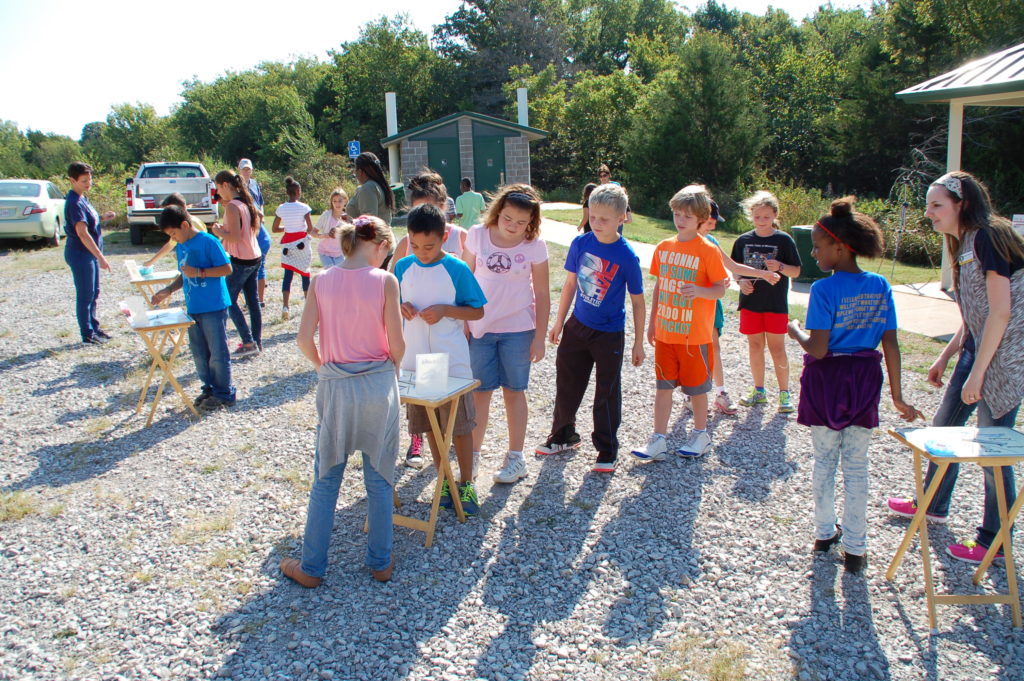Natural Resource Days: Oklahoma County Conservation District
Between 400 and 500 elementary school students will enjoy interactive outdoor natural resource education this year through Oklahoma County Conservation District’s natural resource days at Arcadia Lake and schools. While the district is the primary sponsor for these events, partnership is the key to their success.
For the September 30, 2014 event at Arcadia Lake, four organizations came together to give over 80 students a hands-on natural resource education.
Water Cycle
Becky Inmon, OKCCD district secretary, introduced students to the water cycle before bringing the important process to life with the Incredible Journey activity.
In the Incredible Journey, students take on the persona of a water droplet moving through the water cycle. Each station is equipped with a spinner and a bowl of colored beads. Each bead color represents a different step in the cycle, such as red for animal or white for cloud. By flicking the spinner, students learn which part of the water cycle they will go to next and travel to that station. For example, if a student is at the grass station (green bead), the spinner may tell them to go to the animal station (red bead), and from there, on to the stream station (light blue bead). After a student has played 20 turns, the beads they’ve collected are tied onto a bracelet as a reminder of how the water cycle works.
Tree Time
Jeri Irby, Oklahoma Forestry Services education coordinator, instructed students in the art of becoming a human tree. Students were assigned to different parts of a tree such as leaves or roots, and acted out an appropriate action when Jeri called to them.
Students also learned how to age trees by counting rings in sections of their trunk.
“No way!” one student said when Jeri explained that a four-inch-thick tree was already 30 years old.
Gone Fishin’
“Big” John and other Aquatic Education Volunteers with Oklahoma Department of Wildlife Conservation explained how to identify Oklahoma’s sport fish species along with some of the finer points of angling. For example, when asked how big a fish you caught, a true fisherman will always spread their arms as far apart as possible and exclaim “this big!”
After a lesson in fish identification, students got one-on-one instruction from the volunteers on casting, patience, and of course, catching.
Incredible, Edible Wetland
Karla Beatty, Oklahoma Conservation Commission education coordinator, turned learning about Oklahoma wetlands into a treat—literally. Students sat on a dock completely surrounded by the buzzes and aromas of a living wetland while Karla explained the different plant and animal species that work together to keep these delicate ecosystems in balance. Not only do wetlands support complex food webs essential to many animals Oklahoman’s enjoy viewing and hunting, they are able to remove some pollution from water and often act as recharge locations for underground drinking water and irrigation sources.
Before students explored the wetland around them, they were served edible wetlands in a cup made from puffed rice, chocolate pudding, sprinkles, and pretzels. Each food item represents a different part of the wetland landscape.
To learn about natural resource days near you, contact your local conservation district.








